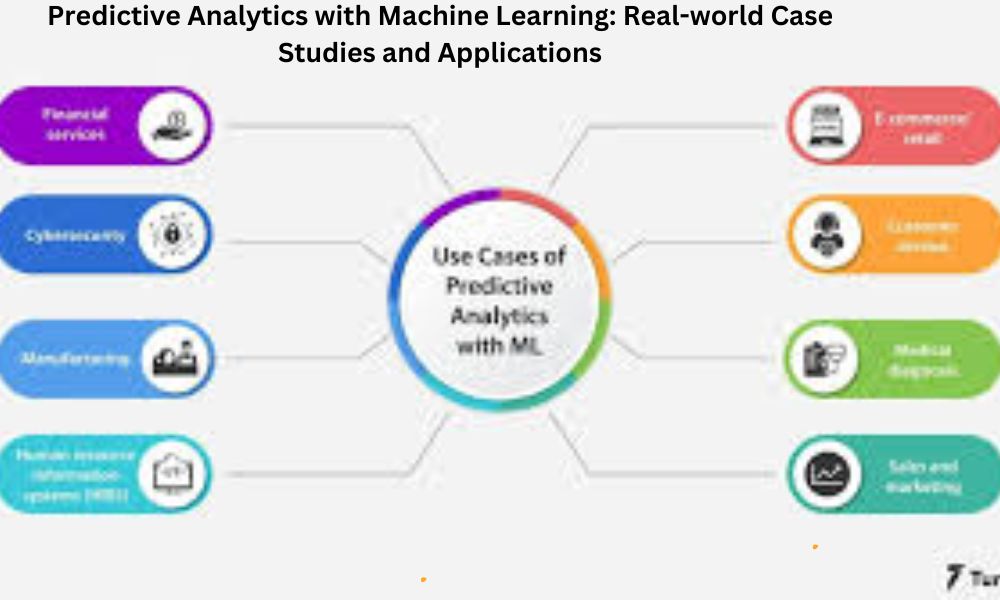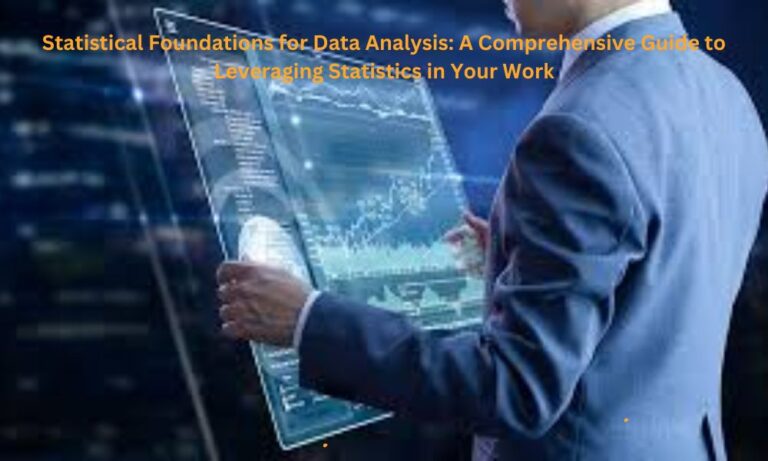Predictive Analytics with Machine Learning: Real-world Case Studies and Applications
Predictive analytics powered by machine learning stands as a formidable tool, reshaping how businesses forecast, strategize, and gain a competitive edge.
This article aims to unravel the practical facets of predictive analytics through real-world case studies, demonstrating its impact on business forecasting and decision-making. Let’s journey through the intricacies of this transformative technology.
Table of Contents
Unveiling the Power of Predictive Analytics with Machine Learning
Predictive analytics, driven by machine learning algorithms, has emerged as a pivotal force in guiding businesses toward informed decisions. By harnessing historical data and advanced modeling techniques, organizations can anticipate trends, mitigate risks, and optimize their operations. This introduction sets the stage for a comprehensive exploration of real-world applications and case studies.
Understanding Predictive Analytics
Defining Predictive Analytics and its Core Principles
Predictive analytics involves leveraging historical data to identify patterns and trends, enabling organizations to make proactive decisions. At its core, this process relies on machine learning algorithms that continuously learn and adapt to new information. Understanding these principles is fundamental to grasping the potential of predictive analytics.
Overview of Machine Learning Algorithms for Predictions
Various machine learning algorithms play a crucial role in predictive analytics. From linear regression to neural networks, each algorithm brings unique strengths to the table. We’ll delve into the nuances of these algorithms, shedding light on their applications in real-world scenarios.
Machine Learning in Business Forecasting
Leveraging Data for Accurate Business Predictions
In the realm of business forecasting, machine learning has proven transformative. Let’s explore case studies that illustrate how organizations have harnessed predictive analytics to optimize inventory, enhance sales strategies, and ultimately bolster profitability.
Case Study 1: Retail Sales Forecasting
In a highly competitive retail landscape, accurate sales forecasting is paramount. Retail giants have successfully employed machine learning algorithms to analyze customer behavior, predict demand, and streamline inventory management. The result? Improved sales, enhanced customer satisfaction, and a more resilient bottom line.
Case Study 2: Financial Market Predictions
Financial institutions navigate complex markets with the help of predictive analytics. We’ll examine how machine learning enables these institutions to forecast market trends, inform investment strategies, and manage risks effectively. Real-world examples will underscore the impact on financial decision-making.
Case Study 3: Healthcare Patient Outcomes Prediction
The healthcare industry benefits significantly from predictive analytics, particularly in predicting patient outcomes. By analyzing vast datasets, healthcare providers can tailor treatment plans, allocate resources efficiently, and improve overall patient care. We’ll explore tangible examples of how this technology is reshaping the healthcare landscape.
Competitive Edge through Machine Learning
Analyzing How Businesses Gain a Competitive Advantage
Staying ahead in a competitive market requires strategic insights. Machine learning applications go beyond forecasting; they empower businesses to gain a competitive edge. We’ll examine case studies that showcase how organizations leverage predictive analytics to outperform competitors, innovate, and lead their industries.
Challenges and Considerations
Addressing Common Issues in Predictive Analytics
While predictive analytics holds immense potential, it comes with challenges. From data quality issues to ethical considerations, organizations must navigate potential pitfalls. This section offers insights into overcoming challenges and ensuring successful predictive analytics implementations.
Strategies for Overcoming Obstacles
- Data Quality Assurance: Implement robust data quality assurance measures to ensure the accuracy and reliability of predictive models.
- Continuous Model Evaluation: Regularly assess and update machine learning models to adapt to evolving datasets and changing business environments.
- Ethical Considerations: Establish ethical guidelines for the use of predictive analytics, addressing concerns related to bias and privacy.
Future Trends in Predictive Analytics
Anticipating the Next Wave of Innovations
The field of predictive analytics is dynamic, with continuous advancements reshaping its landscape. We’ll explore emerging technologies and trends, providing a glimpse into the future of predictive analytics and its potential implications for businesses.
In Conclusion
As we conclude our journey through real-world case studies and applications of predictive analytics, the transformative power of machine learning in business decision-making becomes evident. Organizations that embrace this technology gain a strategic advantage, paving the way for innovation, efficiency, and sustained success.
Frequently Asked Questions (FAQ)
How can businesses ensure the accuracy of predictive analytics models?
Businesses can enhance model accuracy by investing in high-quality data, regularly validating and updating models, and implementing rigorous testing and validation processes.
Are there ethical concerns associated with predictive analytics?
Yes, ethical considerations include potential bias in models, invasion of privacy, and the responsible use of predictive analytics. Establishing ethical guidelines and transparency is crucial.
Can small businesses benefit from predictive analytics?
Absolutely. While large enterprises often lead the way, advancements in technology have made predictive analytics accessible to small businesses, providing insights for strategic decision-making.
What industries can benefit the most from predictive analytics?
Industries such as finance, healthcare, retail, and manufacturing have shown significant benefits from predictive analytics. However, the technology is adaptable and can be valuable across diverse sectors.
How can businesses stay updated on emerging trends in predictive analytics?
Staying informed through industry publications, attending conferences, and engaging with professional networks can help businesses stay abreast of the latest trends and innovations in predictive analytics.




